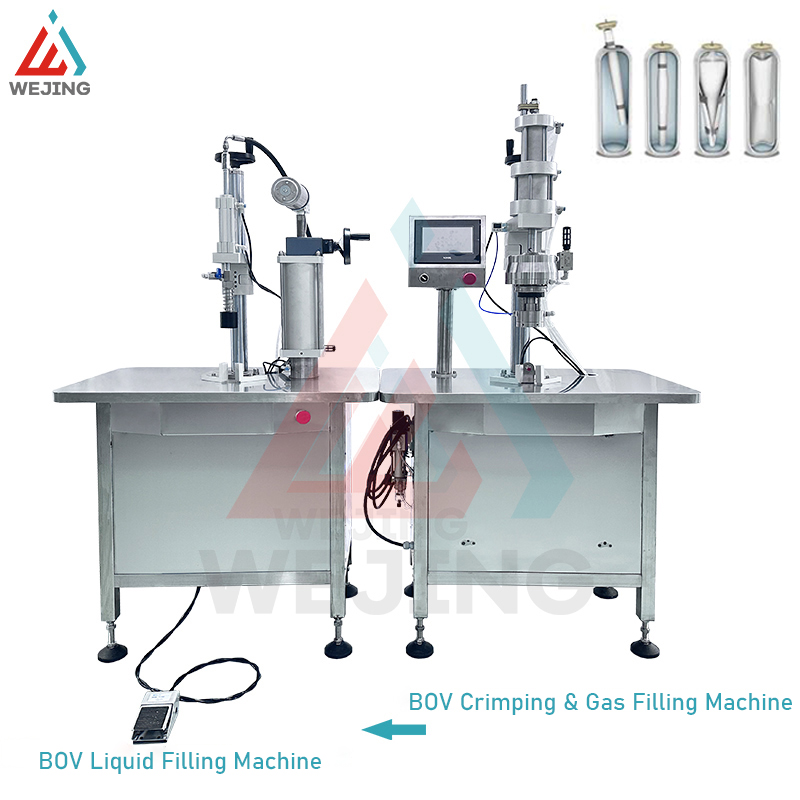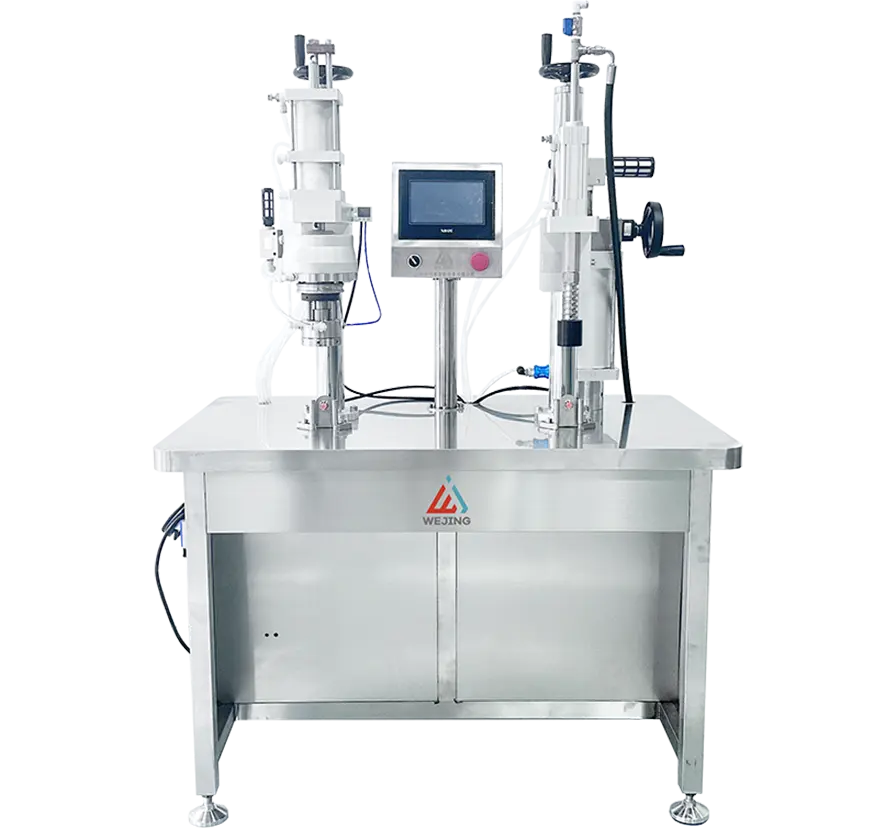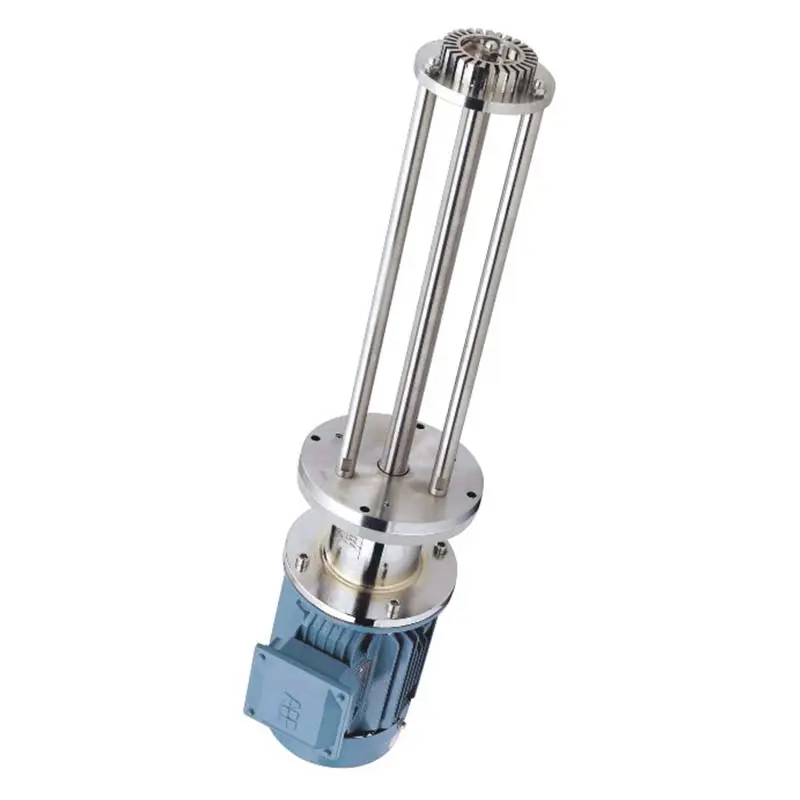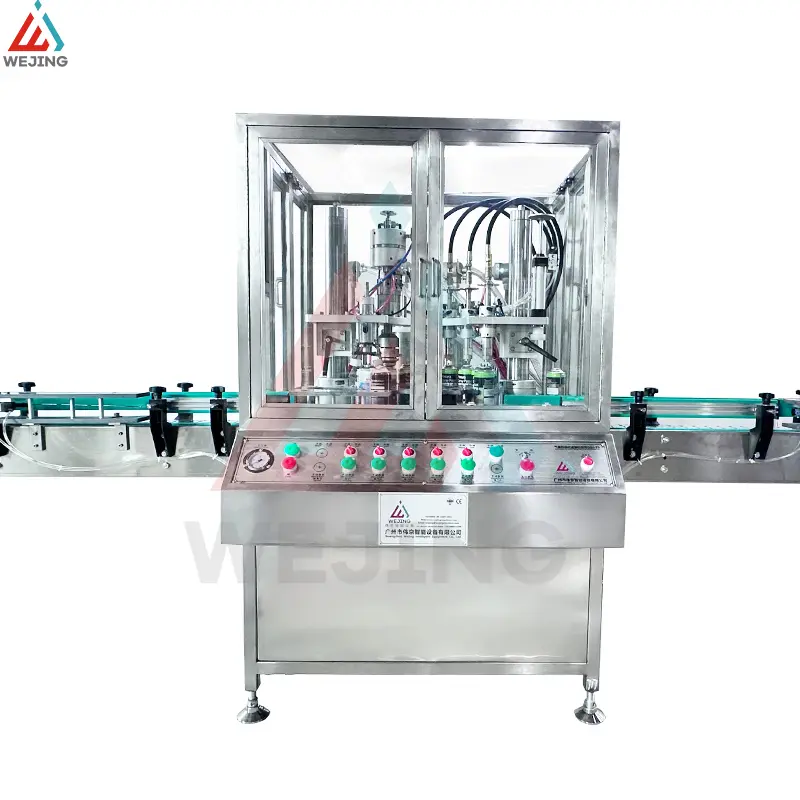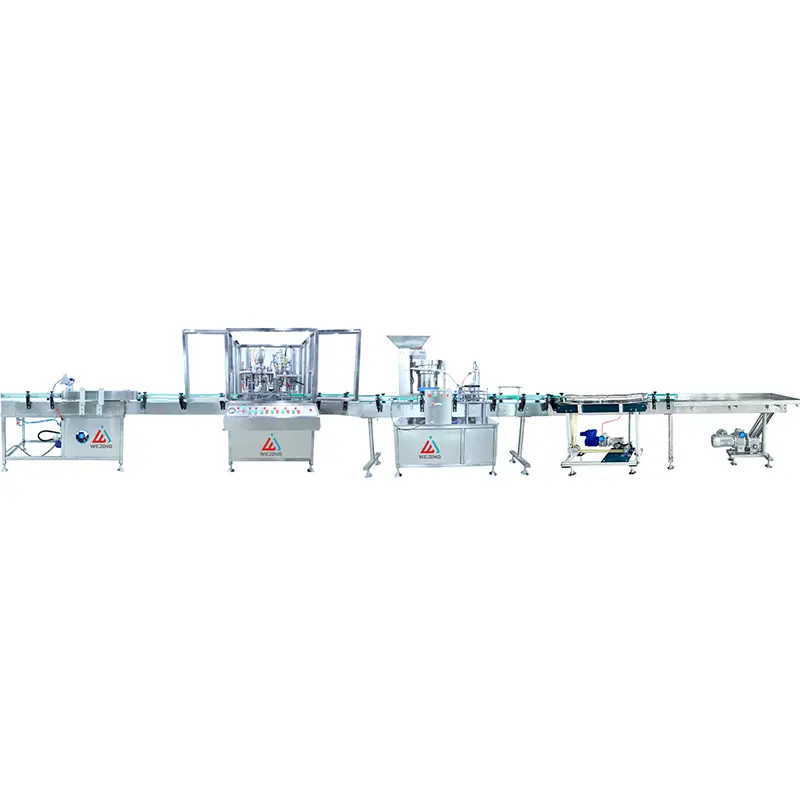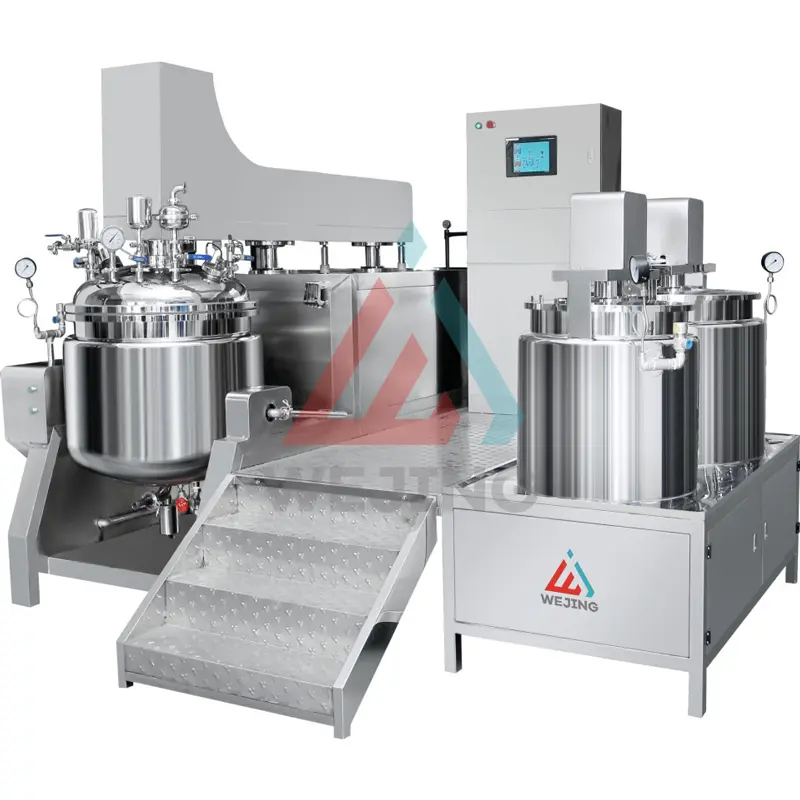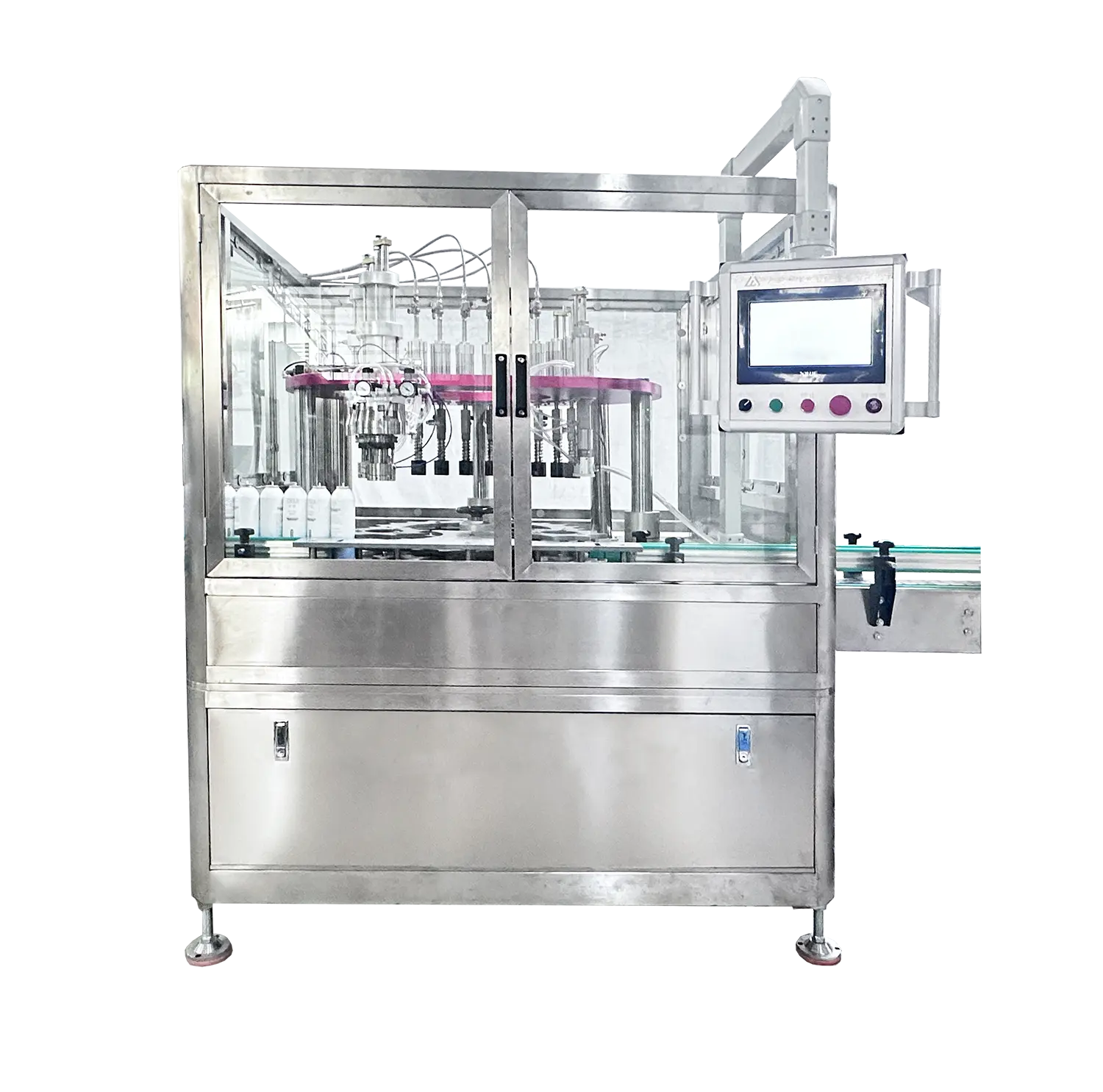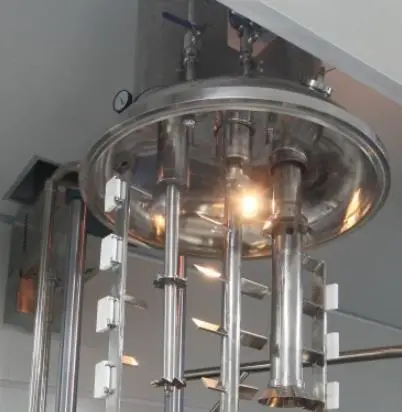0102030405
The Principle and Applications of High Shear Homogenizer
2025-01-07
Introduction
In the realm of industrial machinery, the high shear homogenizer stands as a remarkable device. Its principle revolves around the generation of a powerful shear force within the substances being mixed. This force is the result of the rapid rotation of a specially designed blade or rotor within the mixing chamber.
What is a High Shear Mixing Machine?
What is a High Shear Mixing Machine?
A high shear blender is an essential piece of mixing equipment. It employs a high-speed rotating blade to induce a significant shear force among the materials in the mixing process. This shear force plays a crucial role in thoroughly mixing and dispersing the components, thereby attaining the desired level of dispersion and uniformity. It proves particularly invaluable when dealing with materials that possess high viscosity or are otherwise challenging to disperse. The robust shear force has the ability to break down particles or ingredients effectively and distribute them evenly throughout the mixture. Such blenders find extensive use in diverse industries, including cosmetics, pharmaceuticals, food, and many others.
The operation of a high shear blender is relatively straightforward. One begins by pouring the materials into the mixing chamber, followed by closing the lid and initiating the mixer. The mixing blade then rotates at a high velocity, creating the necessary shear force within the mixture. This process continues for a predetermined period until the desired dispersion and uniformity are achieved. Subsequently, the mixed material can either be utilized as is or subjected to further processing, depending on the specific requirements. High shear blenders are available in a variety of sizes and designs, tailored to meet the unique demands of different applications and mixing needs. They can operate in either batch or continuous mode, serving as an efficient and effective means of achieving consistent and uniform mixtures.
The Principle of High Shear Homogenizer
The Principle of High Shear Homogenizer
The principle underlying the high shear homogenizer is firmly rooted in the creation of a potent shear force within the mixed materials. This force is brought about by the swift rotation of a mixing blade or rotor within the mixing chamber. The high shear force is responsible for breaking down particles, emulsifying substances, and ensuring the even dispersion of materials throughout the mixture.
Typically, a high shear homogenizer consists of a mixing chamber equipped with a rotating shaft and one or more mixing blades. The design of the mixing chamber may incorporate a narrow gap, which serves to enhance the shear force and boost the mixing efficiency. When the materials to be mixed are introduced into the chamber and the mixing blade or rotor rotates at high speed, a strong shear force is generated. This shear force acts to stretch and thin the fluid flow, leading to the breakdown, emulsification, and dispersion of particles or droplets within the fluid. Additionally, the high shear action contributes to the reduction of air bubbles and the improvement of mixture uniformity.
The process of high shear mixing is especially beneficial for materials that are difficult to mix or disperse evenly, such as suspensions, emulsions, or those with high viscosity. The high shear force can effectively break down the particles or ingredients and distribute them uniformly, resulting in a more consistent and stable end product. Compared to unprocessed materials, the homogenized mixture typically exhibits a reduced particle size, enhanced stability, and improved physical properties.
Applications of High Shear Mixers
Applications of High Shear Mixers
High shear mixers have a broad spectrum of applications across numerous fields:
1. Pharmaceutical Industry: They are frequently employed in the pharmaceutical sector to prepare suspensions, emulsions, and other formulations that require the dispersion and stabilization of drug particles in liquid media.
2. Food Industry: Widely utilized in the food industry, for example, in the production of food additives, seasonings, and salad sauces.
3. Cosmetics Industry: In the manufacturing process of cosmetics, high shear mixers are used to prepare products like lotions, creams, and eye makeup, enabling the even dispersion of pigments, waxes, and other ingredients in the matrix.
4. Paint and Coatings Industry: Used to formulate paints and coatings by dispersing and stabilizing pigments and fillers in liquid resins.
5. Adhesive and Sealant Industry: In these industrial areas, they are employed to prepare various adhesives and sealants, ensuring the even dispersion of solid components into liquid components.
6. Nanotechnology Field: High shear mixers are beneficial in the preparation of nanomaterials such as nanoparticles and nanofluids, as their strong dispersion capabilities effectively reduce particle size.
7. Environmental Engineering Field: Can be applied in wastewater treatment and the separation of suspended solids, among other aspects.
Capacity of High Shear Mixers
Capacity of High Shear Mixers
In the world of industrial mixing equipment, high shear mixers come in diverse types, each designed to meet specific production demands. Here, we categorize them based on their distinct configurations:
1. Laboratory-scale High Shear Mixers
These compact yet powerful mixers are tailored for research and development work, as well as small-batch productions. They are often used in laboratories, pilot plants, or by small-scale manufacturers. For instance, the WJ - LTP5 model with a capacity of 5L has a homogenizer motor power of 0.37 kW and a stir motor power of 0.18 kW. Its dimensions are 1260 mm (length) × 540 mm (width) × 1600/1850 mm (height), and it can operate with a total power of 2 kW for steam heating and 5 kW for electric heating, achieving a limit vacuum of -0.09 MPa. Another example is the WJ - LBD5, which shares similar characteristics in terms of power and dimensions for its small 5L capacity, making it suitable for handling delicate formulations and precise mixing tasks where sample quantities are limited.
2. Mid-sized Production High Shear Mixers
This category caters to medium-sized manufacturing operations. The WJ - LTR100, with a 100L capacity, features a homogenizer motor power ranging from 2.8 - 4 kW and a stir motor power of 1.5 kW. It has dimensions of 2750 mm (length) × 2700 mm (width) × 2250/3100 mm (height), and a total power of 13 kW for steam heating and 32 kW for electric heating, along with a limit vacuum of -0.09 MPa. These mid-sized mixers strike a balance between the flexibility needed for varied formulations and the capacity to produce larger batches compared to laboratory models. They find extensive use in industries such as cosmetics, food additives, and pharmaceuticals, where consistent quality and moderate production volumes are crucial.
3. Large-scale Industrial High Shear Mixers
Engineered for high-volume production lines, these behemoths can handle massive quantities of materials. Take the WJ - V3000, for example. With a whopping 3000L capacity, it sports a homogenizer motor power of 15 - 18 kW and a stir motor power of 7.5 kW. Its dimensions are 4800 mm (length) × 4300 mm (width) × 4100 mm (height), and it operates with a total power of 40 kW for steam heating. Such large-scale mixers are indispensable in sectors like paint and coatings, adhesives, and bulk chemical production. They ensure efficient mixing and homogenization of large batches, minimizing production time and maximizing output while maintaining the desired product quality.
4. Specialized High Shear Mixers
Some high shear mixers are designed with unique features to address specific industry requirements. In the pharmaceutical field, there might be mixers with enhanced sterilization capabilities and precise temperature control to safeguard the integrity of drug formulations. For the food industry, mixers could have food-grade coatings and comply with strict hygiene standards. For instance, certain models in the WJ - LTP series, applicable to multiple configurations like top homogenizer with PLC system, top homogenizer double - way mixing, etc., offer the flexibility to adapt to complex mixing processes. These specialized mixers not only provide the necessary shear force but also incorporate additional functions to meet the stringent demands of their respective industries.
Difference between High Shear and Low Shear Mixers
Difference between High Shear and Low Shear Mixers
The primary distinction between high shear and low shear mixers lies in the intensity and nature of the shear forces applied to the materials being mixed. High shear mixers generate strong shear forces within the mixture, usually through the utilization of rapidly rotating blades or other mixing elements. These powerful shear forces are highly effective in breaking down particles, emulsifying substances, and dispersing materials, leading to a more uniform and consistent mixture. High shear mixing is especially advantageous for materials that are difficult to mix or disperse evenly, such as suspensions, emulsions, or those with high viscosity. It can also be employed to reduce air bubbles and enhance the physical properties of the mixture.
Conversely, low shear mixers produce relatively lower shear forces within the mixed materials. They typically employ slower rotating blades or other mixing elements to facilitate mixing and dispersion. Low shear mixing is less forceful and is generally suitable for materials that are easier to mix or have lower viscosity. It is appropriate for materials that are sensitive to high shear forces or require a gentle mixing process to avoid damage.
The choice between high shear and low shear mixers depends on the specific mixing requirements of the materials, taking into account factors such as particle size, viscosity, sensitivity to shear forces, and the desired properties of the final product. High shear mixers offer a more aggressive and efficient mixing action for materials that are challenging to disperse, while low shear mixers are better suited for the gentler mixing of less demanding materials.
Conclusion
In conclusion, the high shear homogenizer, with its unique principle and diverse applications, plays a vital role in modern industrial production. Its ability to handle a wide range of materials and achieve consistent results makes it an indispensable tool in various industries.






